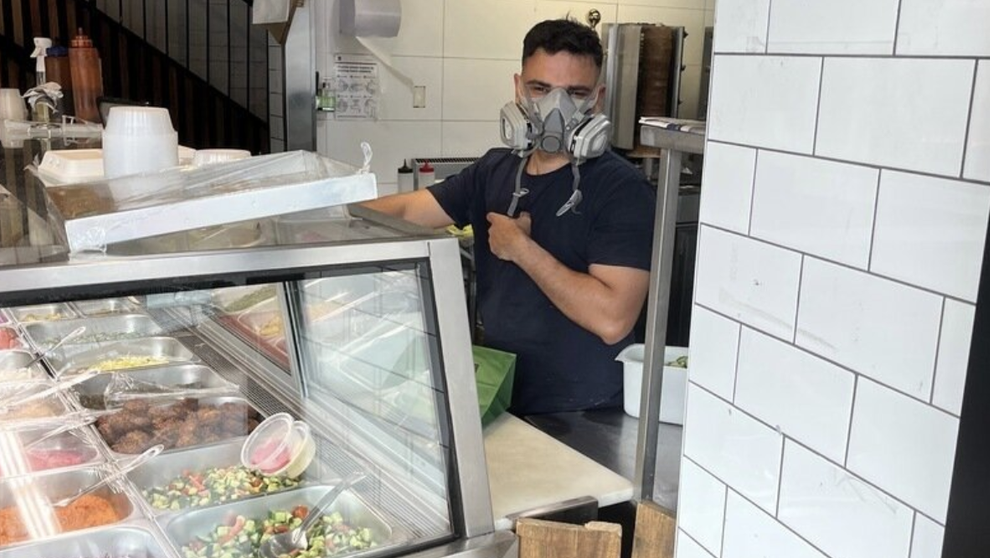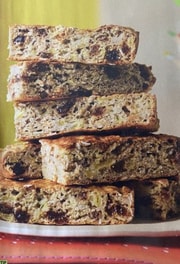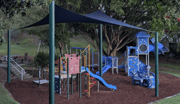
When Aden Barclay first moved to his Neutral Bay home five years ago, he was convinced he had a gas leak.
The mysterious respiratory symptoms that plagued him for months—the breathlessness, the coughing fits, the sleepless nights spent worrying about what was making him so unwell—seemed to point to something seriously wrong with his new place.
'I honestly didn't know what it was so I started to panic, I couldn't sleep at night,' the frustrated resident told 9news.com.au.
It wasn't until he noticed the fine white dust coating everything around his property that the penny dropped. Those towering plane trees lining Military Road weren't just providing shade—they were making him sick.
In this article
The science behind the symptoms
'Platanus trichomes are inhaled and may constitute a respiratory irritant'
While many assume plane tree pollen causes hay fever-like symptoms, scientific research reveals the real culprit is likely the fine spiky 'hairs' called trichomes that cover the back of plane tree leaves. These microscopic irritants are inhaled and may constitute a respiratory irritant, according to peer-reviewed research conducted in Sydney.
Each plane tree produces an average of 300 fruits containing between 6 to 14 million fibres per year - a staggering amount of airborne material that can affect entire neighbourhoods. These minute, hairy fibres can lodge in the airway, irritate eyes and exacerbate hayfever symptoms.
The research is both reassuring and concerning. A comprehensive Sydney study found that only 23.4 per cent of people tested were actually allergic to plane tree pollen, suggesting many symptoms may be caused by physical irritation rather than true allergic reactions. However, for those affected, the impact on daily life can be severe.
A problem spreading across Australia
Barclay isn't alone in his suffering. In Perth, a council horticulturist reported that what started as an occasional cough 20 years ago has progressively worsened to constant throat clearing and dry cough as more plane trees were planted.
Melbourne's inner suburbs are experiencing similar issues, with plane trees adding to seasonal allergy and respiratory conditions.
The problem is particularly acute for people who work outdoors or live in densely planted areas. Muhammad at Neutral Bay's Agha Grill has taken to wearing a respirator mask while working, highlighting just how challenging the conditions have become for some residents.
Common plane tree symptoms reported by affected residents
Persistent cough and throat irritation
Shortness of breath
Eye, nose and throat irritation
Sinus blockages and infections
Asthma-like symptoms
Sleep disruption due to respiratory issues
The timing dilemma
Elevated concentrations of trichomes and achene fibres occur from September to December and August to October respectively - precisely when many Australians want to open their windows and enjoy the warmer weather. For Barclay, this means his home becomes a sealed environment during what should be the most pleasant months of the year.
'I can't leave my windows open in summer and the filter on the fan I uses to keep his home and business cool is constantly clogged with plane tree dust,' he explained.
The double-edged environmental sword
Ironically, these trees were originally planted to improve urban air quality. Plane trees are great urban trees since they are pollution-tolerant, which made them popular choices for busy city streets throughout the late 19th and early 20th centuries.
However, plane trees also emit isoprene, a volatile organic compound that can react with car exhaust in hot weather to create ground-level ozone—actually worsening air quality during Sydney's increasingly frequent heatwaves.
'They're just a waste of space, they actually contribute to the pollution rather than stopping it, it's ridiculous,' Barclay argues, though environmental scientists would note the trees do provide other benefits including carbon sequestration and urban cooling.
Council caught between competing interests
The issue has become politicised between residents and councils, fuelled by the fact that accurate and locally-relevant information on the health risks posed by plane trees is scarce.
North Sydney Council has acknowledged the problem exists but maintains that wholesale removal isn't feasible. A council spokesperson explained that while they've stopped planting new plane trees and will 'gradually phase out existing plane trees,' immediate removal would significantly impact the area's tree canopy cover.
Sydney City Council announced in 2023 that plane trees would be phased out, though primarily due to their vulnerability to drought rather than health concerns. The trees that need removal due to poor health or safety risks will be replaced with more climate-resilient species.
What you can do if plane trees affect you
- Use high-quality air purifiers indoors during peak season (August-December)
- Keep windows closed during windy days in spring and early summer
- Wear N95 or P2 masks when walking near heavily planted plane tree streets
- Shower and change clothes after spending time outdoors during peak trichome season
- Consider relocating outdoor exercise to areas with different tree species
Alternative solutions and hope ahead
Indoor air purifiers can help remove the microscopic fibres before they're inhaled, offering some relief for affected residents. However, attempts to reduce the trees' fibre shedding have thus far failed.
The good news is that replacement trees are already being selected and tested. Native Australian species that are better adapted to our climate and less likely to cause respiratory issues are being trialled across various councils.
Barclay's petition may have attracted nearly 100 signatures, but the broader solution will likely require patience as councils balance community health concerns with environmental needs and practical constraints.
Your voice matters
While the science is still evolving and councils are working through complex replacement strategies, affected residents shouldn't suffer in silence. Document your symptoms, speak to your GP about respiratory issues that coincide with plane tree seasons, and engage with local council consultations about urban forest planning.
Have you noticed respiratory symptoms that seem to worsen around certain trees in your neighbourhood? What practical solutions have you found that help during the dusty months? Share your experiences and tips with fellow readers below—your insights could help others who are struggling with similar issues.
Primary Source
https://www.9news.com.au/national/p...response/9dc6af55-0581-430f-9c72-bdee3718f27f
Plane trees getting on your nose? The truth about hay fever
Cited text: The airborne fine spiky ‘hairs’ visible as a white film on the back of plane tree leaves may be causing the hay fever symptoms.
Excerpt: While many assume plane tree pollen causes hay fever-like symptoms, scientific research reveals the real culprit is likely the fine spiky 'hairs' called trichomes that cover the back of plane tree leaves
https://theconversation.com/plane-trees-getting-on-your-nose-the-truth-about-hay-fever-9223
Plane trees getting on your nose? The truth about hay fever
Cited text: the weed one · Indeed, it’s not known to what extent people have a true allergy to plane tree pollen and whether the airborne fine spiky “hairs” (call...
Excerpt: While many assume plane tree pollen causes hay fever-like symptoms, scientific research reveals the real culprit is likely the fine spiky 'hairs' called trichomes that cover the back of plane tree leaves
https://theconversation.com/plane-trees-getting-on-your-nose-the-truth-about-hay-fever-9223
London Plane Tree bioaerosol exposure and allergic sensitization in Sydney, Australia—PubMed
Cited text: Platanus trichomes are inhaled and may constitute a respiratory irritant.
Excerpt: These microscopic irritants are inhaled and may constitute a respiratory irritant
https://pubmed.ncbi.nlm.nih.gov/22123378/
London Plane Tree bioaerosol exposure and allergic sensitization in Sydney, Australia | Request PDF
Cited text: A plane tree yields an average of 300 fruits (containing from 6 to 14 million fibers) per year [19].
Excerpt: Each plane tree produces an average of 300 fruits containing between 6 to 14 million fibres per year
https://www.researchgate.net/public...nd_allergic_sensitization_in_Sydney_Australia
Melbourne’s Plane Trees plainly a hazard | Air Cleaners Australia
Cited text: The trees not only give off pollens but also minute, hairy fibres which can lodge in the airway, irritate eyes and exacerbate hayfever symptoms.
Excerpt: These minute, hairy fibres can lodge in the airway, irritate eyes and exacerbate hayfever symptoms
https://aircleanersaus.com.au/2015/12/04/melbournes-plane-trees-plainly-a-hazard/
London Plane Tree bioaerosol exposure and allergic sensitization in Sydney, Australia—PubMed
Cited text: As determined by SPT, 85.9 per cent of subjects were sensitized, 65.6 per cent to any pollen tested, 56.3 per cent to Lolium perenne, and 23.4 per cent to Platanus.
Excerpt: A comprehensive Sydney study found that only 23.4 per cent of people tested were actually allergic to plane tree pollen
https://pubmed.ncbi.nlm.nih.gov/22123378/
Plane Tree Dust—The Scourge of the Chelsea Cough | Tentative Plant Scientist
Cited text: No tablets or medication seem so far seems to help
 ... Hi from Perth Western Australia , I also have had these unexplained symptoms for the last 20 ...
... Hi from Perth Western Australia , I also have had these unexplained symptoms for the last 20 ...
Excerpt: In Perth, a council horticulturist reported that what started as an occasional cough 20 years ago has progressively worsened to constant throat clearing and dry cough as more plane trees were planted
https://tentativeplantscientist.wor...e-tree-dust-the-scourge-of-the-chelsea-cough/
Melbourne’s Plane Trees plainly a hazard | Air Cleaners Australia
Cited text: The City of Melbourne and the inner suburbs plane trees are adding to this season’s allergy and respiratory conditions.
Excerpt: Melbourne's inner suburbs are experiencing similar issues, with plane trees adding to seasonal allergy and respiratory conditions
https://aircleanersaus.com.au/2015/12/04/melbournes-plane-trees-plainly-a-hazard/
London Plane Tree bioaerosol exposure and allergic sensitization in Sydney, Australia—PubMed
Cited text: Elevated concentrations of trichomes and achene fibers occurred from September to December and August to October, respectively.
Excerpt: Elevated concentrations of trichomes and achene fibres occur from September to December and August to October respectively
https://pubmed.ncbi.nlm.nih.gov/22123378/
Am I Allergic To Plane Trees—London Plane Tree Allergy Problems | Gardening Know How
Cited text: Plane trees are great urban trees since they are pollution-tolerant.
Excerpt: Plane trees are great urban trees since they are pollution-tolerant
https://www.gardeningknowhow.com/ornamental/trees/plane-tree/do-plane-trees-cause-allergies.htm
Plane trees getting on your nose? The truth about hay fever
Cited text: The issue became politicised between residents and councils, and was fuelled by the fact that accurate and locally-relevant information on the health ...
Excerpt: The issue has become politicised between residents and councils, fuelled by the fact that accurate and locally-relevant information on the health risks posed by plane trees is scarce
https://theconversation.com/plane-trees-getting-on-your-nose-the-truth-about-hay-fever-9223
Melbourne’s Plane Trees plainly a hazard | Air Cleaners Australia
Cited text: The fibres can penetrate indoors given their microscopic size so a good quality air purifier like IQAir’s Healthpro 100 should be considered as a mean...
Excerpt: Indoor air purifiers can help remove the microscopic fibres before they're inhaled
https://aircleanersaus.com.au/2015/12/04/melbournes-plane-trees-plainly-a-hazard/
Melbourne’s Plane Trees plainly a hazard | Air Cleaners Australia
Cited text: Attempts to reduce the trees fibre shedding have also thus far failed.
Excerpt: However, attempts to reduce the trees' fibre shedding have thus far failed
https://aircleanersaus.com.au/2015/12/04/melbournes-plane-trees-plainly-a-hazard/







